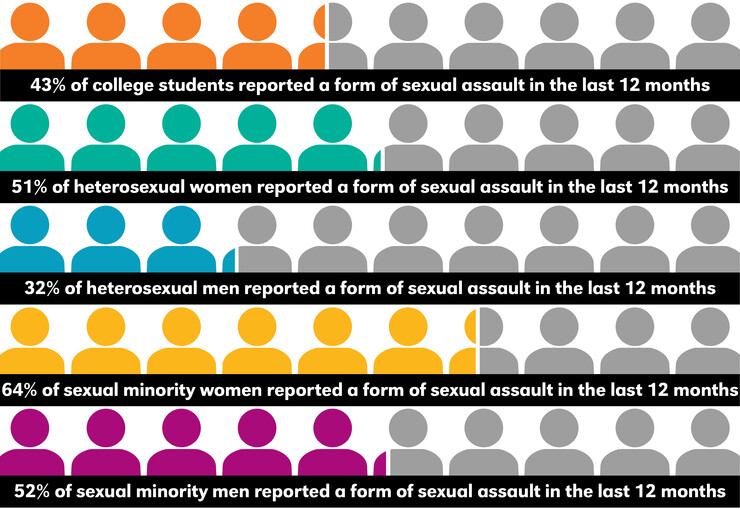· 2 min read
Study shows sexual assault risk greater for LGBTQ students

Welcome to Pocket Science: a glimpse at recent research from Husker scientists and engineers. For those who want to quickly learn the “What,” “So what” and “Now what” of Husker research.
What?
Sexual assault has been studied for decades. Previous research has demonstrated that the risk of being a victim of sexual assault is much higher on college campuses and that women are most likely to be victims, but is it that simple?
No, says Husker researcher Colleen Ray, a graduate student in sociology, because society is comprised of more than just heterosexual males and heterosexual females. She recently authored a study in the Journal of Interpersonal Violence that looked at risks of sexual assault among heterosexuals, as well as sexual minority men and women.
So what?
The study surveyed 1,413 college students at two universities, and found that while heterosexual females are at a higher risk for victimization, sexual minority males and females face elevated risk, too.
Among the findings, 43 percent of all college students reported some form of sexual assault in the last 12 months. When the responses were broken down by subgroups, 51 percent of heterosexual females reported some form of sexual assault, while 52 percent of sexual minority males suffered sexual assault, and 64 percent of sexual minority females reported some form of sexual assault. Meanwhile, 32 percent of heterosexual males reported being sexually assaulted.Now what?
“The main takeaway is that by focusing on males versus females, we’re missing this group of people being victimized,” Ray said. “We need to think about changing the language that we use when talking about sexual assault.”
Focusing solely on heterosexual females as victims may add unnecessary difficulties for sexual minorities and men to report sexual assault, Ray said.










